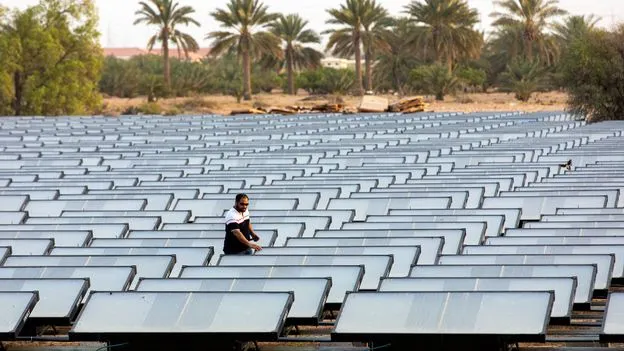Southern Nevada is in the grip of one of the worst droughts it has experienced in recorded history, leading to water shortages and restrictions on use. So, in water-stressed areas such as this, the prospect of wringing water from thin air is an appealing prospect. And it is exactly what Cody Friesen is trying to do.
Friesen, an associate professor of materials science at Arizona State University, has developed a solar-powered hydropanel that can absorb water vapour at high volumes when exposed to sunlight.
It is a modern-day twist on an approach been used for centuries to pull water from the atmosphere, such as using trees or nets to “catch” fog in Peru, a practice that dates back to the 1500s and is still being used today.
Sounds like what you need is a droid that understands the binary logic of moisture vaperators.
Sigh, this is just a dehumidifier, not a solution to the water crisis, look up Fontus or Waterseer, or just google “water from air scam”.
The technology can’t work where it is needed, and isn’t needed where it can work.
It needs humidity, but if you are in a humid area then you will have access to water that you can filter/treat into drinking water for far less cost than this stupid idea, and in dry areas there isn’t any significant water in the air to extract, making it far more efficient to truck water in.
What about in London? The UK is very humid, yet London relies heavily on ~40% unsustainable groundwater
Properly managed, groundwater can be sustainable.
The issue is that the energy required per litre of water is poor, even with high humidity. Other options, like long pipelines from other areas or desalination, start looking very appealing.
There are some dry coastal areas with very specific fog conditions where it can make sense, but it is indeed quite niche.
That’s a logical assumption. It says here that “The SOURCE Hydropanels are already being used by schools in Mexico, Syrian refugee communities in Lebanon and Jordan, and fire stations in Puerto Rico that have been hit by hurricanes” which, if true, shows possibility for wider application where needed.
The ammount of energy to convert water vapor into liquid is very high, there have to be really hard getting fresh water by any other means for this system to be worth it in the long run.
If it is coastal, then it should have access to sea water, a reverse osmosis desalination plant will probably be more efficient and reliable in the long run.
Cody Friesen or Cody Fremen?
It was a joke about Dune, thanks for your positive engagement!
Friesen’s goal is to democratise access to water for people with few options
A panel costs about $2,000 (£1,500) and lasts at least 15 years
"These panels are constructed to create four to five litres of drink per panel per day,
So 22.000 liters over 15 years or 22m³ for $2000. That’s $11 per liter. Maybe half that if their AI improvements pan out. But way too expensive.
The dissonant / solar heating approach is pretty nice though. This could be interesting if you could build this DIY with simple materials.






